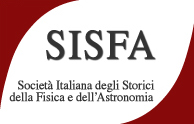Speaker
Description
Eccentric-epicycle constructions are the basic machinery used by Ptolemy (II cent. CE) in the Mathematical Syntaxis to account for Sun, Moon, and planetary phenomena. In Ptolemy's astronomy, these kinds of diagrams represent the geocentric configurations of heavenly bodies in space, i.e. the variable spatial relationship between a moving body and the fixed Earth. However, there are reasons to believe that such diagrams, which Ptolemy recovers from Hipparchus’ works (II cent. BC), could have been in origin velocity diagrams, i.e. geometrical constructions representing in an abstract velocity space the variable kinematical relationship between two points in relative motion. Strong indications in this sense come from the Greek assimilation of Babylonian astronomy, in which it was common practice to describe astronomical motions in terms of time-velocity couples, and from the highly refined art of sphere-making, as it is exemplified by the so-called Antikythera Mechanism (II cent. BC). Therefore, in my communication, I will propose a new interpretation of Hipparchus’ diagrams which takes these elements into account and aims to be as close as possible to the general methodological framework of Hellenistic mathematics. My proposal highlights the possibility that around II century BC a theory of heavenly motions largely equivalent to classical dynamics had been developed, a conjecture first proposed by Lucio Russo in 1994.

